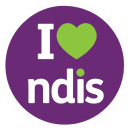In the pursuit of creating a more inclusive healthcare landscape, understanding and implementing disability-inclusive practices are paramount. This comprehensive guide aims to explore the principles and practices that healthcare providers can adopt to ensure inclusivity for individuals with disabilities. From accessible facilities to personalized care plans, let’s embark on a journey toward transforming healthcare experiences for everyone involved.
Healthcare is a fundamental right for every individual, regardless of their abilities. However, achieving truly inclusive healthcare involves more than just meeting basic needs; it requires an understanding of the unique challenges faced by individuals with disabilities. By adopting inclusive practices, healthcare providers can create an environment where everyone feels respected, valued, and able to access the care they need.
Accessible Facilities: Breaking Down Physical Barriers
One of the foundational aspects of disability-inclusive healthcare is ensuring that facilities are physically accessible. This goes beyond wheelchair ramps; it includes considerations for individuals with various mobility challenges and sensory sensitivities. From waiting areas to examination rooms, the goal is to create spaces that accommodate diverse needs, promoting independence and dignity.
Personalized Care Plans: Tailoring Healthcare Experiences
Person-centered care is at the heart of disability-inclusive healthcare. This involves recognizing the unique needs, preferences, and goals of each individual. By tailoring care plans to the specific requirements of patients with disabilities, healthcare providers can enhance the overall quality of care. This approach fosters a sense of empowerment and ensures that individuals actively participate in decisions regarding their health.
Communication: The Foundation of Trust
Effective communication is a cornerstone of quality healthcare. In disability-inclusive settings, communication strategies must be adapted to accommodate diverse abilities. This includes using clear and simple language, providing information in accessible formats, and actively engaging with patients to ensure their understanding. Building trust through effective communication is essential for positive healthcare experiences.
Technology: A Catalyst for Accessibility
The role of technology in enhancing healthcare accessibility cannot be overstated. Telehealth solutions, assistive devices, and digital health records contribute to a more accessible and convenient healthcare experience for individuals with disabilities. Embracing technological advancements ensures that healthcare services are not only inclusive but also aligned with the evolving needs of the community.
Conclusion
Creating a disability-inclusive healthcare environment requires a commitment to understanding, empathy, and proactive measures. By breaking down physical barriers, adopting person-centered care, prioritizing effective communication, and leveraging technology, healthcare providers can contribute to a more accessible and equitable healthcare system. This comprehensive guide serves as a starting point for healthcare professionals and organizations to embrace inclusivity and provide care that truly meets the needs of all individuals, regardless of ability.












